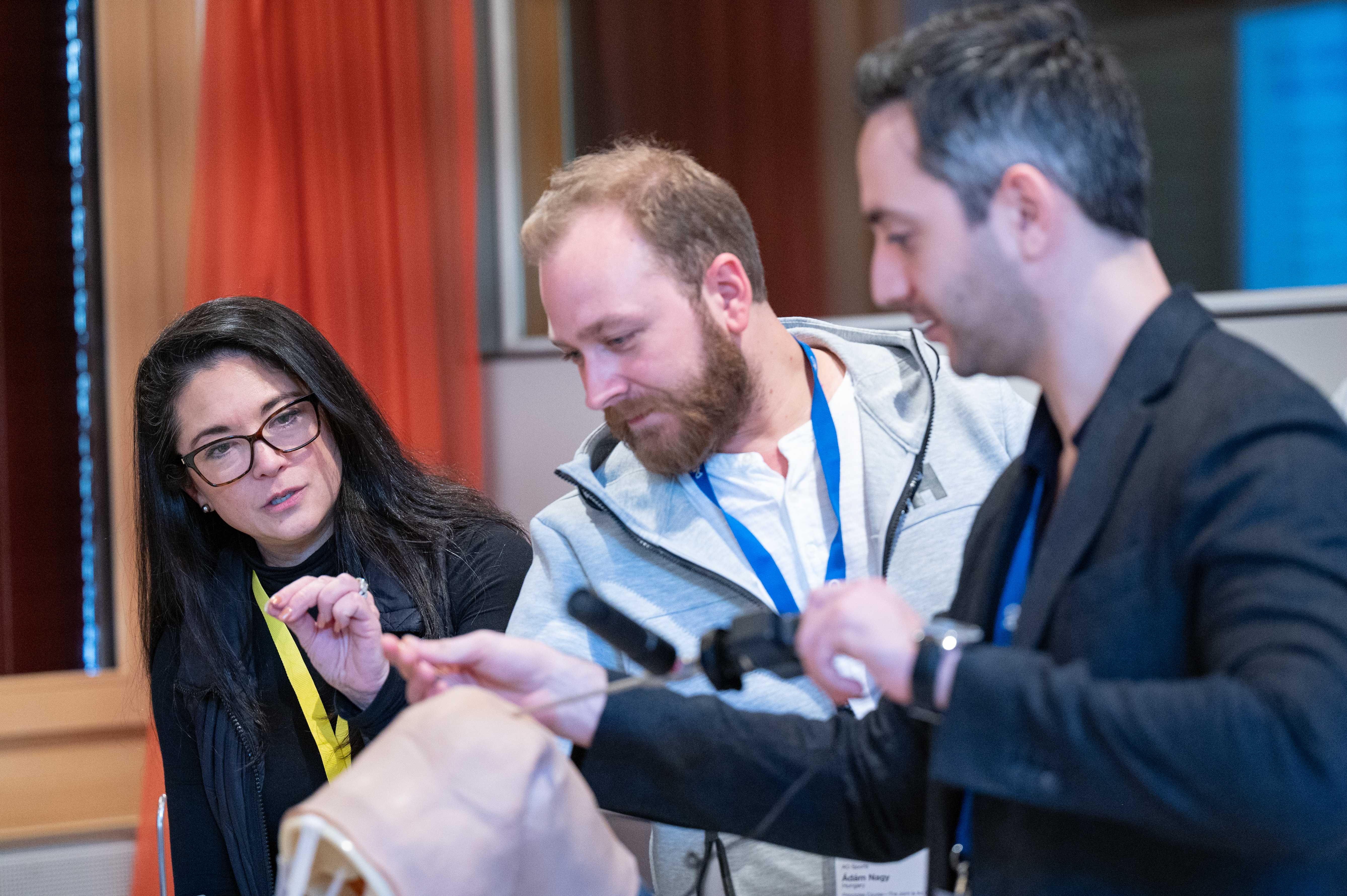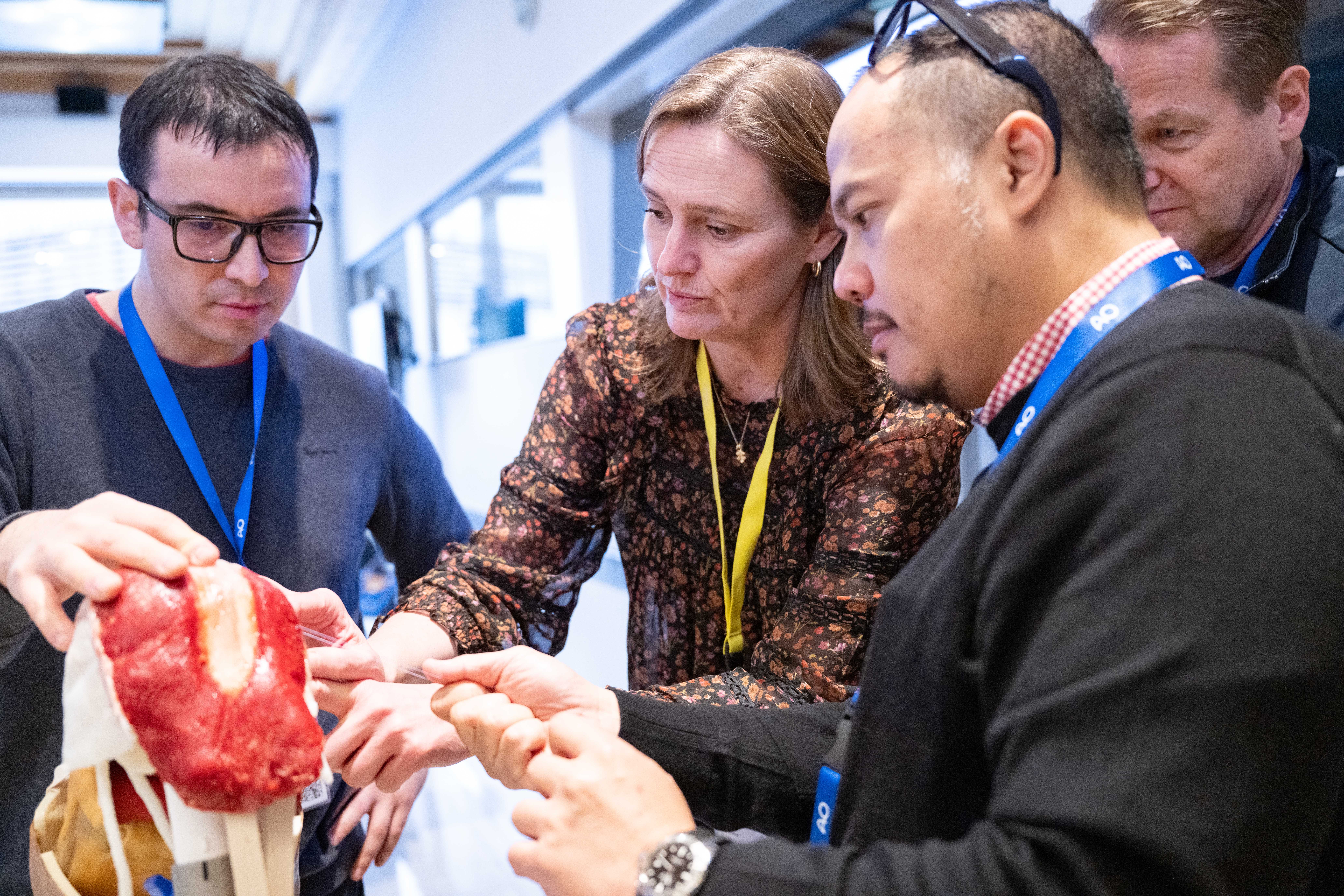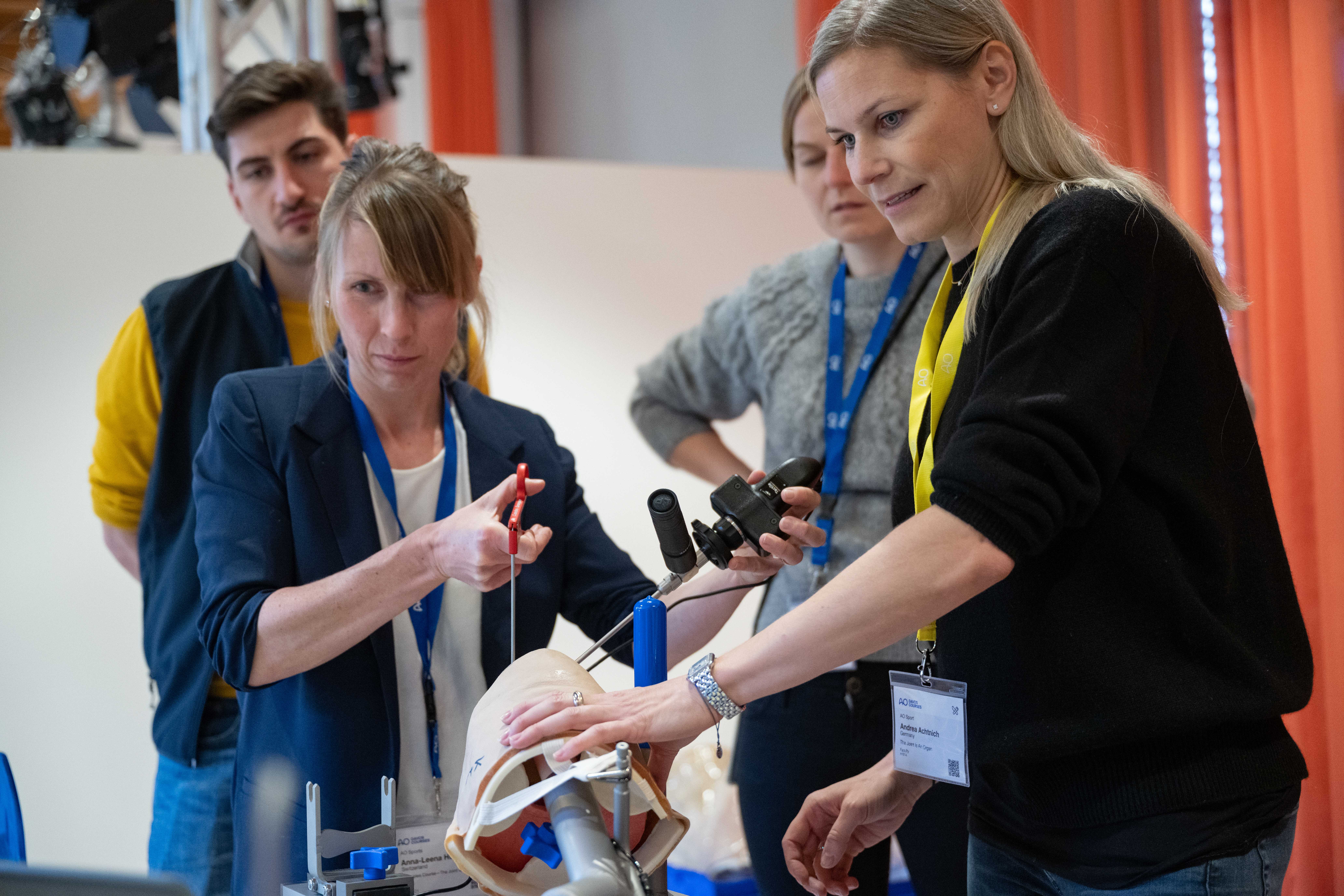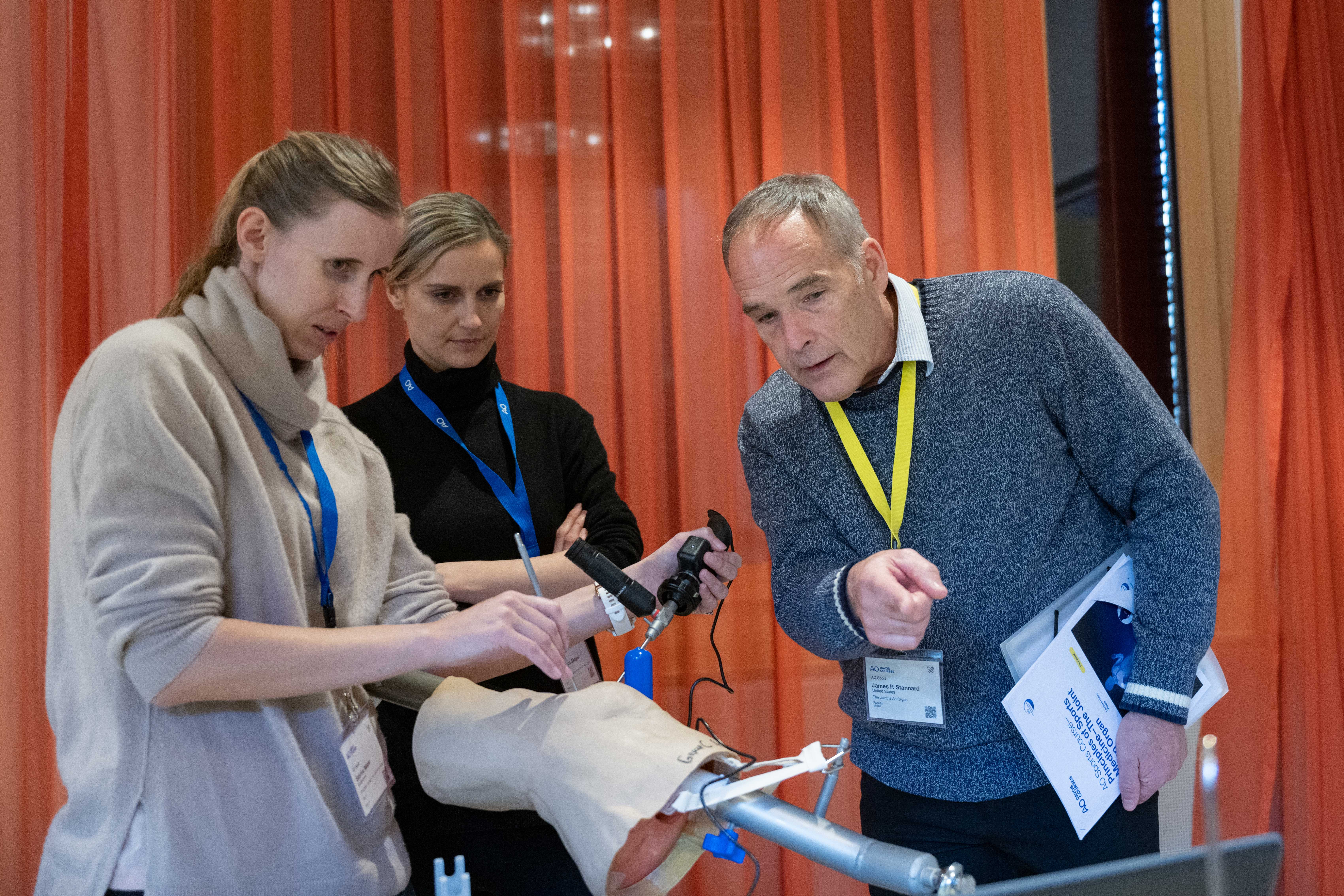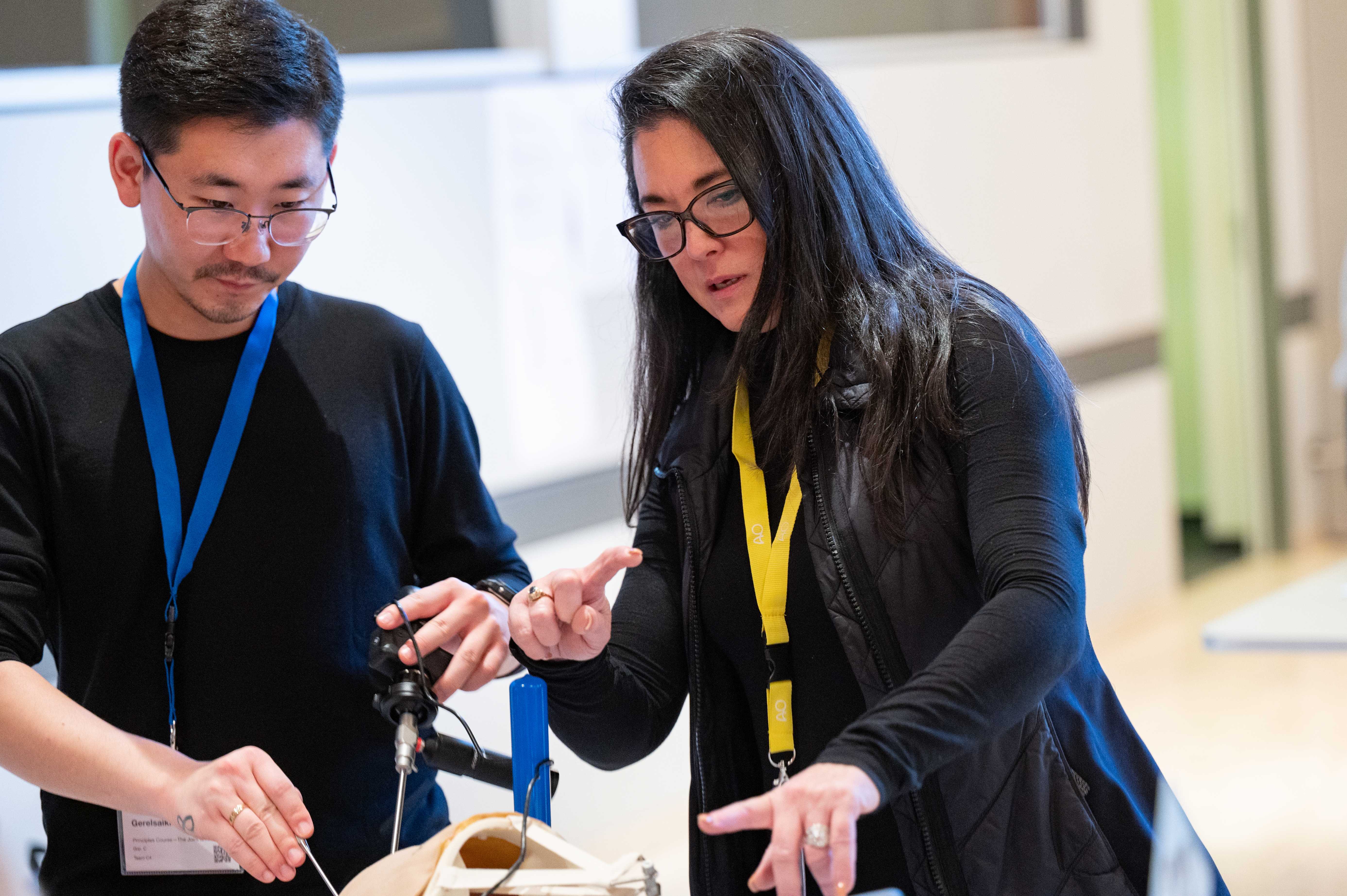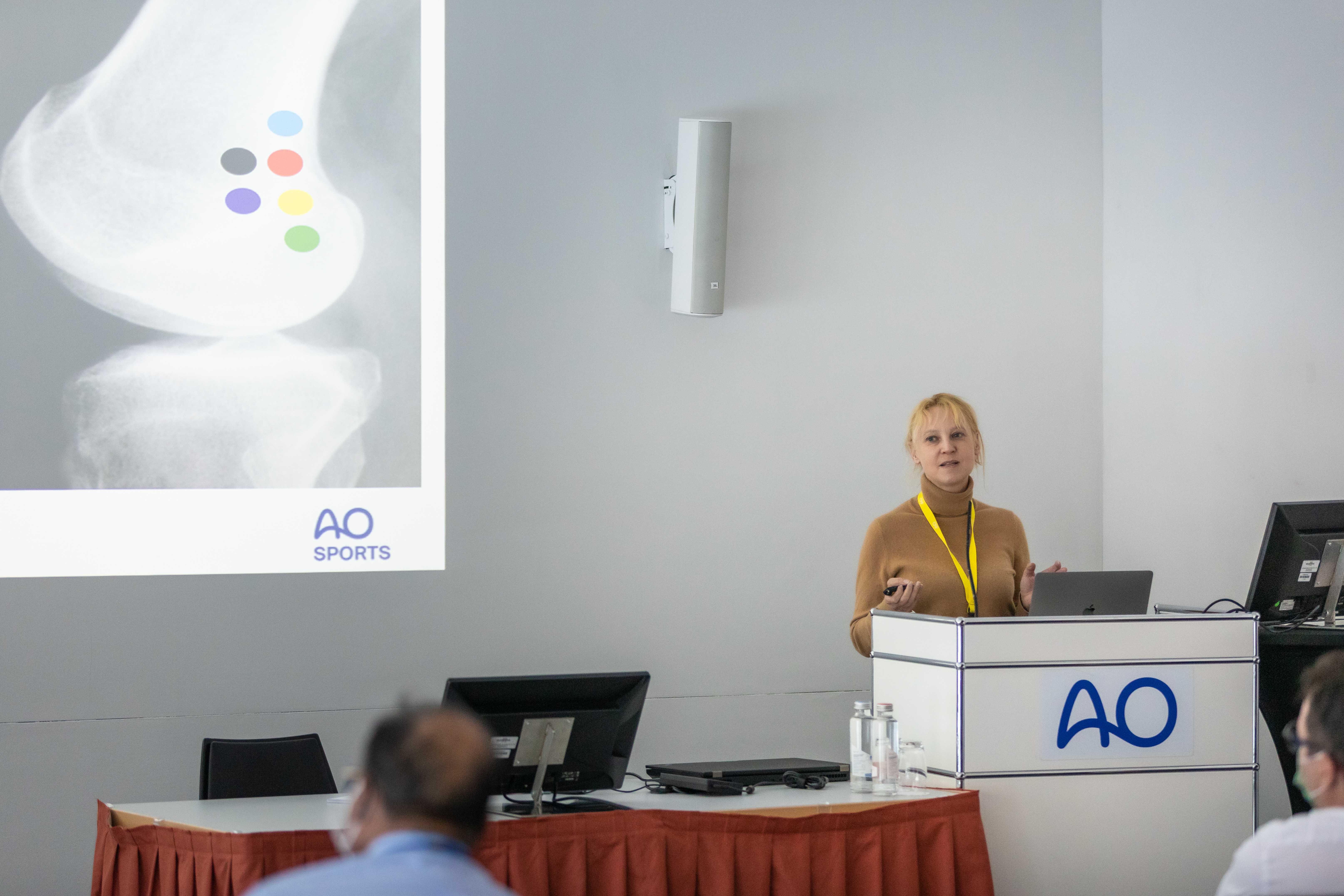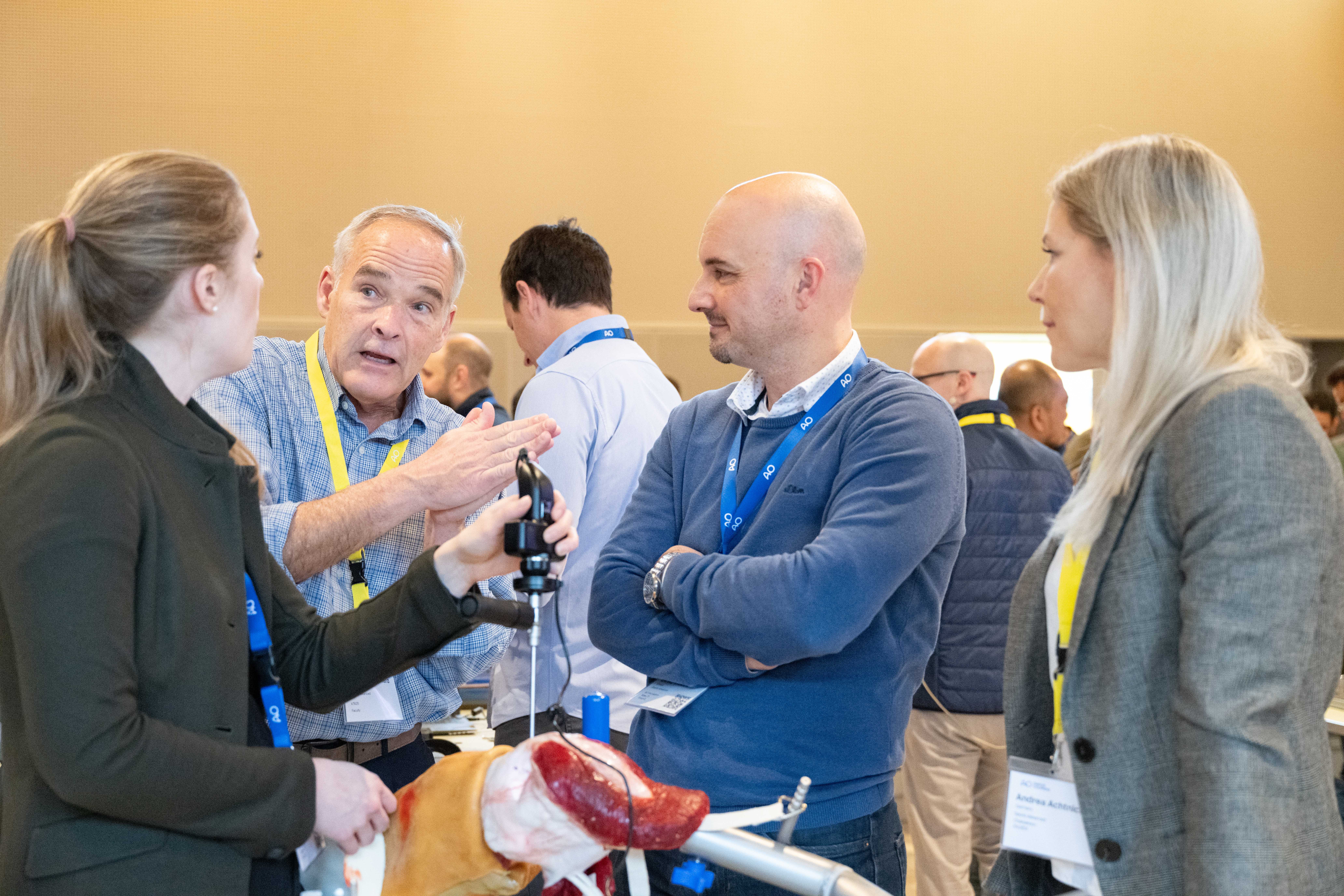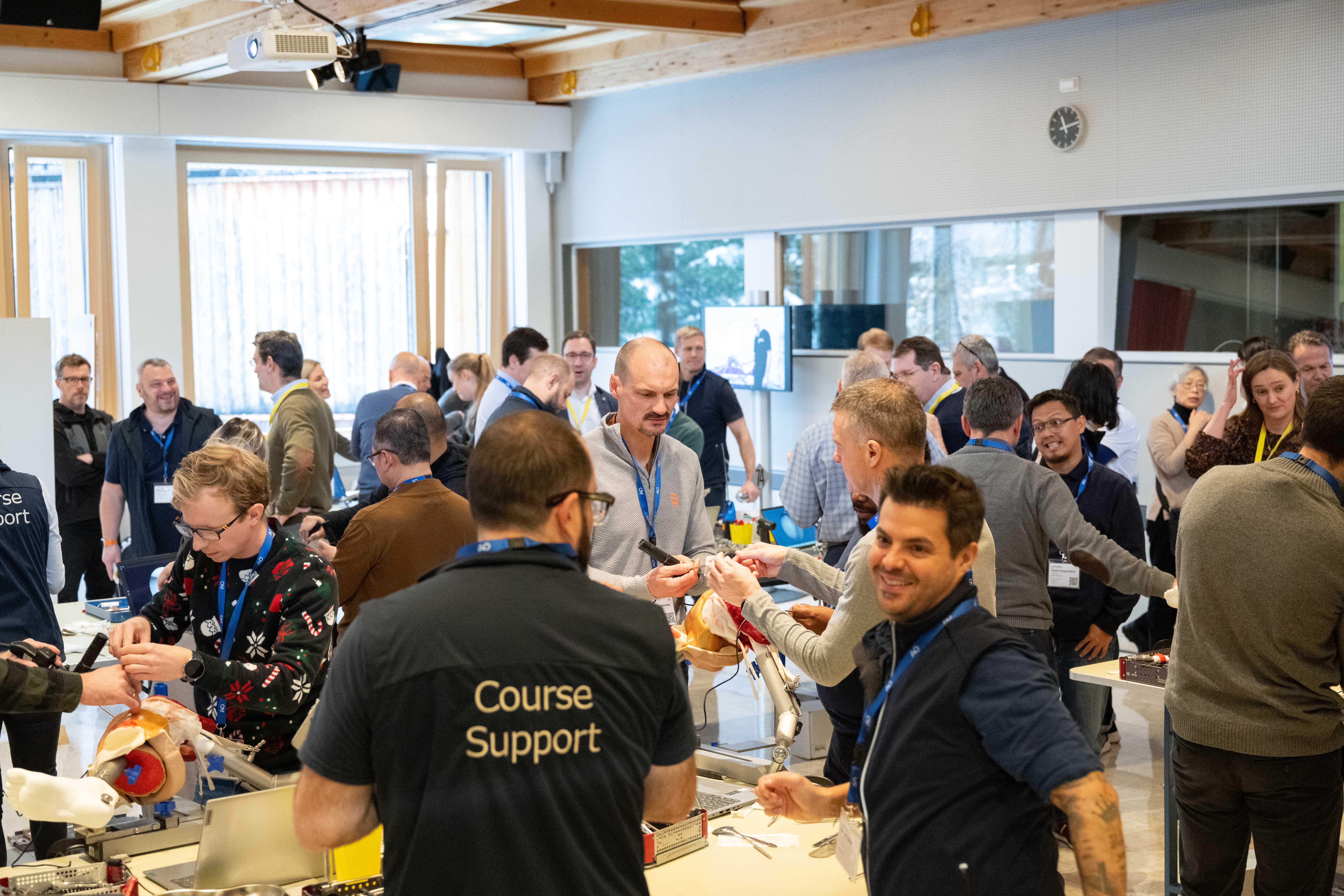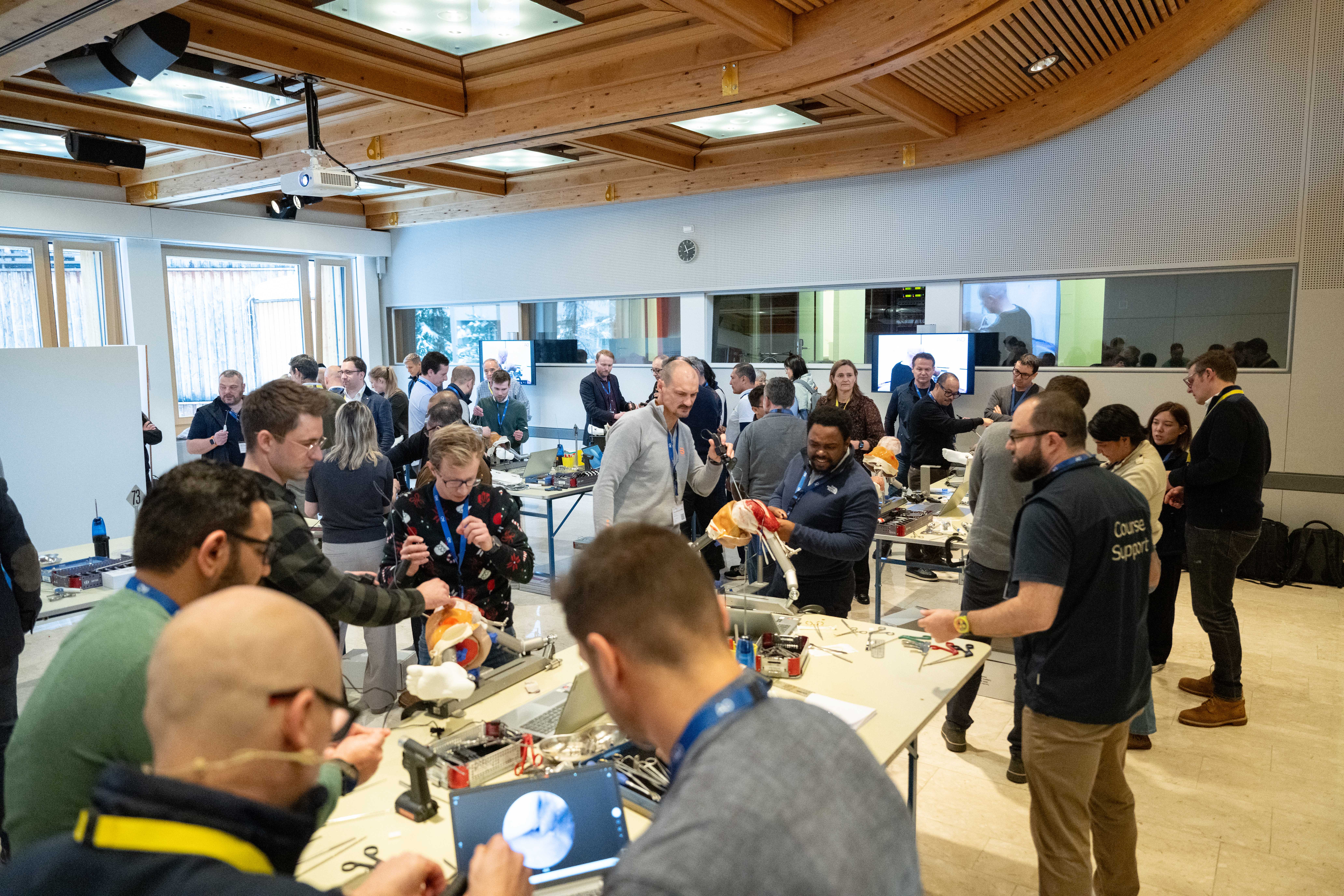AO Sport Principles Course—The Joint is an Organ
The goal of this educational event is to teach the fundamental principles of sports medicine, with focus on the knee and shoulder. It is critical to recognize that the joint works as “an organ system.” Applied knowledge of knee and shoulder anatomy and biomechanics will assist in the diagnosis and management of sports injuries. Participants will achieve technical competency in the arthroscopic and open treatment of common knee and shoulder pathology.
Top national, regional, and international faculty
2-3 days in duration
For surgeons who already treat small animal fractures
Network with colleagues from all over the world
CME credits
Course content
-
Course objectives
- Appreciate the unique anatomy and biomechanics of intra- and extraarticular structures around the knee and shoulder
- Perform a thorough and systematic history and physical examination and review pertinent imaging studies, taking into consideration joint, limb, and patient-specific factors
- Formulate a treatment plan based on a focused problem list for common knee and shoulder sports injuries
- Comprehend the principles of sports medicine fixation strategies
- Perform standard arthroscopic procedures for sports medicine application and be familiar with open procedures for the knee and shoulder joint
- Apply the principles of sports medicine rehabilitation and return to play
-
Course modules
- Module 1—Anatomy and biomechanics
- Module 2—Imaging, classification, and principles of surgical setup
- Module 3—Patient evaluation, arthroscopy, and fixation techniques
- Module 4—Arthroscopic and open approaches for knee and shoulder
- Module 5—Joint-specific surgical techniques and rehabilitation
-
Featured Lectures
- Virtual tour of the knee
- Anatomic tour of the shoulder
- Patient history, imaging, and classification systems for sports injuries
- Counseling for player, coach, and family
- Cartilage
- Meniscus (incl. posteromedial approach)
- ACL
- Biceps
- Anterior Instability
- Rotator Cuff (Supraspinatus)
- Rehabilitation protocols
-
Practical Exercises
- Knee and shoulder examination
- Knee—basic and arthroscopic skills
- Shoulder—basic and arthroscopic skills
- Dry-bone exercises—knee
-
Small Group discussions
- Knee and shoulder (operating room setup, patient positioning, principles of arthroscopy, portals, and approaches)
- Common knee inuries
- Common shoulder injuries
- Knee (treatment, rehab, return-to-play protocols, pearls, pitfalls, and complications)
- Shoulder (treatment, rehab, return-to-play protocols, pearls, pitfalls, and complications)
Course details may be subject to change. Please check your chosen date and location for the detailed program.


